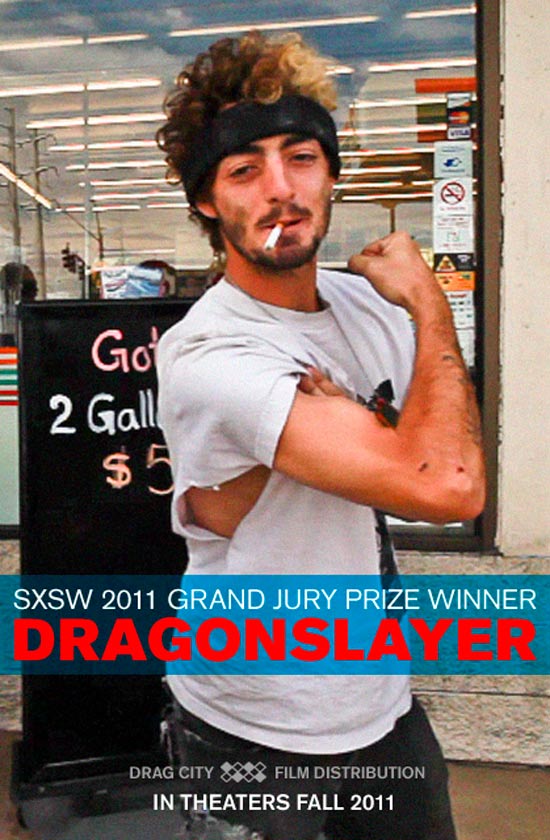I was in London for the film festival, and took the time between drinks to answer a few questions.
Month: November 2011
A few months ago, Jennifer Fox wrote a guest post for this very site, a three-part, 29-point guide to running a successful Kickstarter campaign. Fox’s groundbreaking documentary My Reincarnation had recently broken all Kickstarter records and would ultimately go on to raise over $150,000, so her posts weren’t just informative and useful, they were a manifesto, a victory lap for the very concept of crowdsourcing.
Over the past decade, I’ve been working on a film called Lost Bohemia, a documentary focusing on the semi-secret world of the Carnegie Artist Studios and the lives of her tenants, including such luminaries as Bill Cunningham and Editta Sherman. The project took a tragic turn in the middle of production, when it was announced that everyone, including myself, was being evicted from these studios due to a series of “renovations” proposed by the Carnegie Foundation. Lost Bohemia ultimately ended up being a chronicle not only of a community but also its destruction, a cautionary tale set in a world corrupted by real estate madness and gentrification.
Now, when I read Fox’s posts, Lost Bohemia was in a similar situation to My Reincarnation: We had a finished documentary that, while well reviewed, had not yet found distribution; naturally, I was inspired to try this Kickstarter thing out myself. I pulled together a team and, following Fox’s wisdom, amongst other sources of Kickstarter-lore, attempted to devise a sucessful campaign. But the best laid plans, etc, etc…
Cut to the 31st of October, 2011. The Lost Bohemia Kickstarter has a 4 days left to raise a third of its target $18,000. The campaign has not been a failure, not by any stretch of the imagination, but it’s scary sitting here, not knowing if we’re going to be able to secure distribution. And so, in light of that, and seeing as it’s Halloween, I give you the Four Scareist Things About Running A Kickstarter Campaign!
1. Technical Difficulties
When we launched on the 5th of October, we had everything set up and ready to go. We had made a great video, reached out through social media, compiled email lists of thousands of prospective donors, sorted out all the financial details; all we had left to do was push the button and LAUNCH. Unfortunately, fate threw a pretty massive gear into the works: for most of the first day, Kickstarter was experiencing some severe technical problems. That meant that a large portion of the people we told about our project went to check it out, saw that the site was down, and promptly forgot about it. This was completely out of Kickstarter’s control, let alone ours; sometimes these things just happen. This is port of the reason why it’s incredibly important to update regularly, to keep circulating the word, to never drop the ball: not only is it just a good idea to keep buzz circulating at all times, but also there will be times when you reach out and people will not be able to reciprocate.
2. Looking for an audience
A crucial difference between Lost Bohemia and My Reincarnation became painfully apparent as the campaign developed. While Reincarnation is, at its heart, a film about the relationships between fathers and sons, it’s also a film that will be of interest to anyone fascinated with Tibetan Buddhism. Lost Bohemia, on the other hand, is a film that is both limited and yet general in scope, and, as a result, difficult to find a specific demographic for. It’s a film about people losing their homes, but it’s also a film about artists and gentrification and what makes a community a community. It’s a film about old people that resonates most soundly with young people; in a word it’s a film without a specific niche so not the easiest to market.
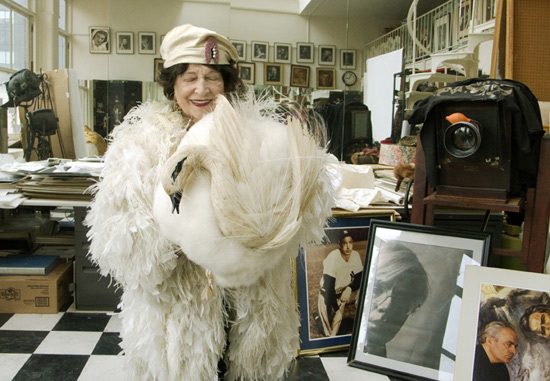
3. Lulls
On the 20th of October, the scariest thing happened: nothing. No donations, no emails, no questions. We just kept on refreshing the page to see the same number parroted back at us over and over again: $6,231. I didn’t even have to look that up, it’s just seared into my brain. We sent out updates, Facebook notifications, emails, Victorian street urchins with wax-sealed missives, all to no effect. I went to sleep that night thinking, that’s it, we’ve ran out of steam, ran out of interested donors, it’s over.
When I woke up we had two new donors, and I could breathe again. But we never found out why exactly this lull occurred, and townsfolk say that on a full moon, you can still hear a lull howling out upon the moors…
4. Uncertainty
Here’s the thing: when it comes down to it, even after you’ve researched and compiled and perfected, even if you have a great team and a great video and great incentives and something great to give money to, there’s still a certain percentage of running a Kickstarter campaign that is pure crapshoot. And like all great gambles, Kickstarter is an all or nothing game; if we don’t reach our goal of $18,000 by the end of the week, we don’t get anything. You can never really relax. If you are halfway though your campaign and you’ve raised 33% of your target, is that good or bad? Can you rely upon other projects data as a control of any kind? Or does each project develop independently, in its own unique way, according to the mitigating factors surrounding it?
As confident as I am that our project will succeed, I can’t just pretend that the doubt and the uncertainty aren’t there. Kickstarter is about asking strangers for money so you can make your dreams come true. Sometimes it’s a bit hard to have faith in that.
Now let me make this clear: we here at Lost Bohemia HQ love Kickstarter, and we are awed by the 100+ pledges we have received so far. It’s an awesome site, and all the support that we have received from it has been phenomenal. I can’t say thank you enough to everyone who has donated to Lost Bohemia. I just want to make it clear that Kickstarter is tough, and on occasion… a bit scary.
For more on Lost Bohemia, check out the Kickstarter.
The official website: www.lostbohemia.com
Our incentives page: www.lostbohemia.com/kickstarter-fundraiser/kickstarter-incentives/
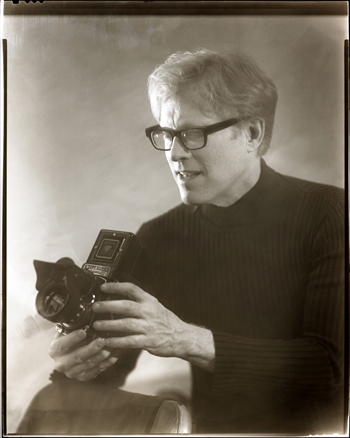
Josef Astor — Filmmaker, Photographer
LOST BOHEMIA is Josef Astor’s first film. In 1985, he opened his photography studio in
Carnegie Hall, living and working there for over twenty years. Astor is acclaimed for his
theatrically staged, historically informed portraits of individuals from the world of music,
architecture, dance, theatre and art.
His photography regularly appears in Vanity Fair, The New York Times, The New Yorker,
Newsweek, GQ, Esquire, Rolling Stone, House and Garden, Dance Ink. Astor’s advertising clients range from AT & T to Bergdorf Goodman, Absolut Vodka and Phillip Morris.
He directed sequences in the documentary PARASOMNIA and was also Production Designer for the PBS documentary Aaron Copland at 100.
Astor’s work has been widely collected and exhibited, including shows at The International Center of Photography, Julie Saul Gallery, Howard Greenberg Gallery, ‘Vanity Fair Portraits’ at the National Portrait Gallery in London, and upcoming exhibit “The Digital Darkroom” at The Annenberg Space for Photography. He has received the Infinity Award from the International Center of Photography. Astor is currently on the faculty of the School of Visual Arts in New York.
I was in London for the BFI International Film Festival and was asked about Todd’s latest.
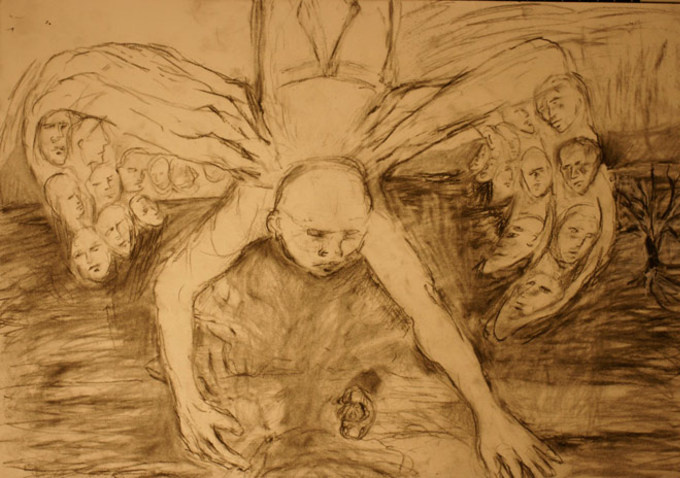
Right now I’m nearing the end (Friday night at 8!) of a Kickstarter campaign to raise money to get to a rough cut on the film. I’ve applied for a billion grants where people I don’t know go into a room and look at my project and come out and tell me “yes” or “no,” (usually no, and by email) so it’s incredible to build a web page, put a video on it and have 400+ people say “yes!” by backing the project. It’s pretty mind-blowing, that “yes.” All the endless reservations, differences in taste, politics, and sensibility that kept various granting organizations or corporations from supporting my project are absent. Of course they may be hundreds of people viewing my video and reading my text who loathe it, but fortunately Kickstarter and Indiegogo have no guestbook for people who looked and left. Whomever might’ve rejected my project and moved on, I’m blissfully unaware, checking my email and racking up the next 15 backers who write me messages about how much they love the excerpt, and the idea of the film, and can’t wait to see it!

I can’t help but think that the extent to which first person speech, in film, is considered too personal, or not appropriate to fund goes back to the sense that someone speaking in the first person speaks with a small voice, with a domestic voice, as opposed to with the authority of the state, the church, the university. Whether the filmmaker is Alan Berliner or Agnes Varda, there’s still a sense that if you are talking about yourself, it must be personal, and if it’s personal, it can’t be universal. Or, as a woman in the audience at a recent screening of Tiffany Shlain’s Connected, one of my favorite films of 2011, said, when I pressed her to tell me what she thought, “I think films like this one are self-indulgent because documentaries should be about something important, and if you’re talking about yourself, it means you think you’re important.” I appreciated this woman’s candor, but I think her views are not only unconsciously sexist, I think there’s an unfortunate sense that what’s important must be outside ourselves! And I would argue that what’s universal is not always what’s rubber-stamped by experts or confirmed by mass appeal, but is always a good story well-told: and that Joan Didion is no less universal than Toni Morrison: and that Tiffany Shlain is no less universal than Steven Spielberg: the difference is the form, not the authority of the speaker nor the weight of the story.
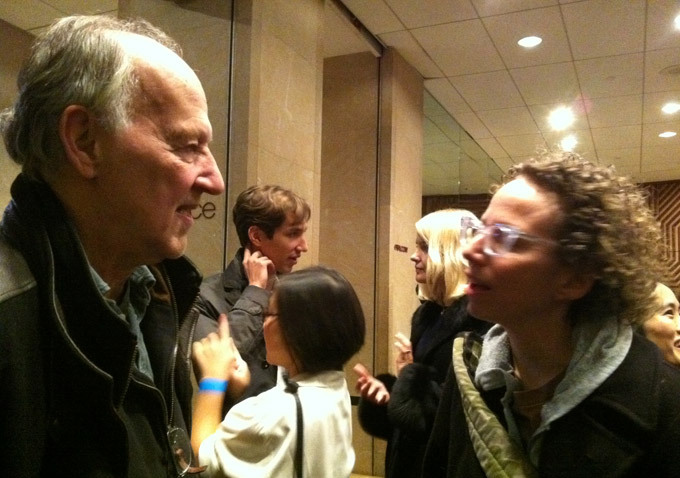
So, speaking of filmmakers who combine first person speech with observations of the world, I was (and still am as I write this) deep into my Kickstarter campaign for Earth Camp one, and thought I’d go to the opening of DocNYC last Tuesday night not only to see the new Werner Herzog film Into the Abyss but to ask Herzog if he would endorse my film Earth Camp One’s Kickstarter campaign.
Jennie Livingston works in both fiction and nonfiction. Her films include Paris is Burning, Who's the Top? and Through the Ice. She lives in Brooklyn, NY. This summer she directed a video for Elton John's Las Vegas stage show, a series of portraits of New Yorkers to accompany the song "Mona Lisas and Mad Hatters."
Sunday, November 6th at 4pm NYC
Todd Solondz will talk with playwright Thomas Bradshaw (the upcoming Burning at The New Group) about how to write about subjects that others won’t touch. As a writer and director, Todd Solondz is known for unflinching, darkly funny storytelling and graphic depictions of behaviors that somehow reveal the humanity beneath. Fellow New Jersey native Thomas Bradshaw, whose plays are similarly daring explorations, will discuss with Solondz his strategies for delving into the things no one wants to talk about.
To reserve your seats, please email seats@thenewgroup.org. Space is limited, so reservations are a must.
What is Dark Nights at The New Group?
Dark Nights at The New Group offers unique programming and enlightened conversation to complement and coincide with our company’s mainstage productions. In four to six events each season, Dark Nights seeks to create a forum for public conversation and dialogue between artists and audience, thereby enhancing the cultural landscape. Past events have featured luminaries such as F. Murray Abraham, Stephen Adly Guirgis, Eric Bogosian, Zoe Caldwell, David Henry Hwang, Tony Kushner, Martha Plimpton, Hal Prince and Wallace Shawn. Topics have ranged from gay adoption (in an event hosted by Rosie O’Donnell alongside our musical The Kid) to an evening highlighting Sam Shepard’s work (led by Ethan Hawke with music by the composers from A Lie of the Mind), to a panel on documentary theatre (featuring Marc Wolf performing Another American, his OBIE-winning play first produced at The New Group).
Todd Solondz has directed Welcome to the Dollhouse, Happiness, Palindromes , Storytelling, Life During Wartime, and the upcoming Dark Horse.
Thomas Bradshaw: recent plays include Mary (The Goodman Theater); The Bereaved (Partial Comfort Productions, and subsequently produced at The State Theater of Bielefeld in Germany); Southern Promises (P.S. 122); Dawn (The Flea Theater); Job (The Wilma). He is the recipient of a 2009 Guggenheim Fellowship, the 2010 Prince Charitable Trust Prize, and a 2011 New Voices New York Fellowship from the Lark Play Development Center. Prophet, Strom Thurmond Is Not A Racist, Cleansed, Purity, Dawn, and Southern Promises are all published by Samuel French, Inc. A German translation of Dawn was presented at Theater Bielefeld and the National Theatre of Mannheim in Germany. Bradshaw is an Assistant Professor in the MFA program at Northwestern University. He has been featured as one of Time Out New York’s ten playwrights to watch and Best Provocative Playwright by The Village Voice. He was the Playwright in Residence at The Soho Theatre in London.
What are you doing this weekend? If you had any friends that came to Tuesday night’s HopeForFilm Screening at Goldcrest of Tristan Patterson’s SxSW Audience Award winning film DRAGONSLAYER, I am sure that’s what you’ll now be going to see, because the word was “that good”! When I put on a screening, I also write a letter letting my list know why I care about the film. This is that letter for Dragonslayer.
Dear Film Fans,
It’s hard to find much good with the speculative & irresponsible practices of our financial sector, but the devastation they’ve delivered is the quiet but extremely resonant backdrop for Tristan Patterson’s fascinating character study of a skater named Skeetch. A doc delivered with tremendous affection towards what might have been mistaken for human wasteland, Tristan finds the beauty in his focus akin to the glory Skeetch and his tribe find in the tracts of abandoned homes and pools that become both their playlands and sketchpads. Artists abound on all sides of the camera, painting on an incredibly intimate scale. This is documentary as portraiture, as true to its form as it is to its content.
Film, like life, could/should be ours to invent, but the outside pressures frequently push us in over-worn directions; Tristan and Skeetch resist those forces to forge a work and a character unique but emblematic of our times. Skeeth has a skating style of his own, launched with abandon, punctuated with enthusiasm, and dismissing injury or error as a long ago accepted given. His ramshackle heart is mined by Patterson as a golden ray in a world dominated by artifice and posture — and through that, I defy you to not end up wishing our film diet could be populated by other reciprocal minstrels and artists with the restraint, discipline, observation, and heart of Patterson. This may be his first film, but you know there’s more to come.
DRAGONSLAYER is a handmade antidote to the corporate embrace of skateboard culture. It is ode to individuality and a ballad to hard times. It is of no surprise that SXSW’s audience rallied around it, awarding it well-deserved honor, prestige, and cred, and we are delighted to welcome it into our home as well. DRAGONSLAYER may be close to number seventy in the long line of cinematic pleasures, Christine Vachon and her merry band of collaborators have delivered to this world — a remarkable act of commitment and fortitude in this enterprise that sometimes seems hellbent on driving out the last ounce of resistance to a corporate world of false dreams, promises, and opportunity. It seems remarkable that this is the first film of hers we’ve shown, but what could be a better way to start?
Hope to see you there,
Ted



